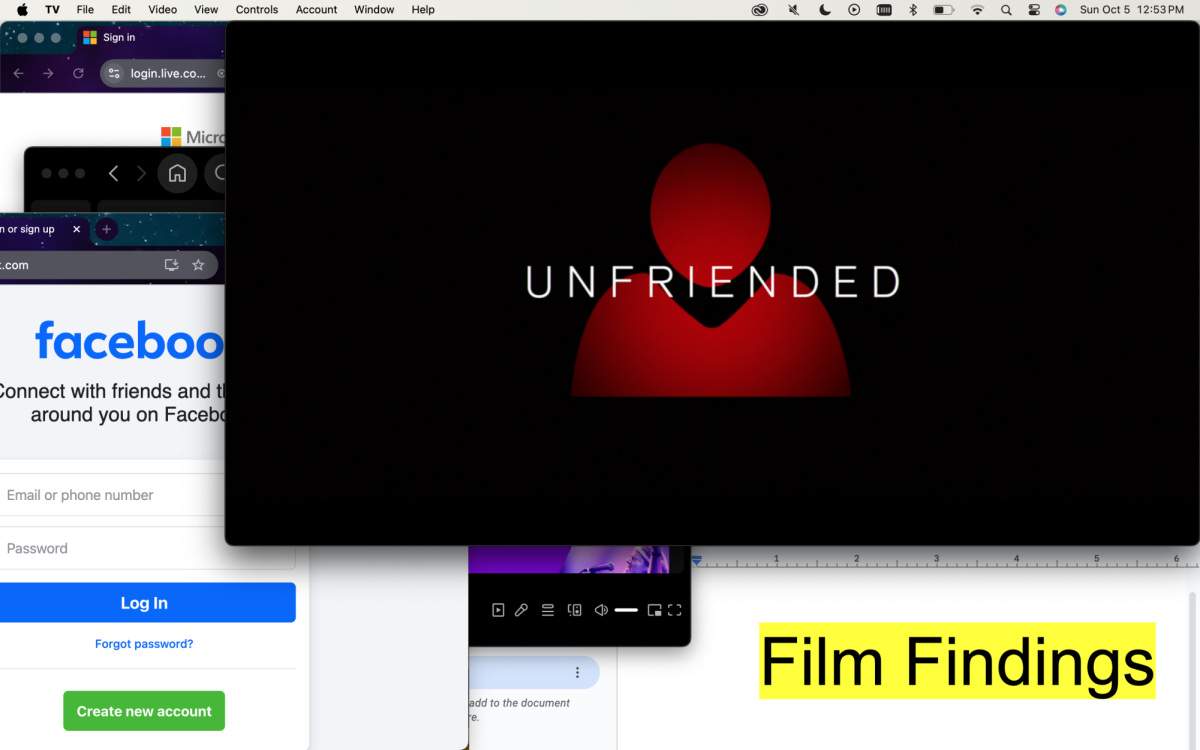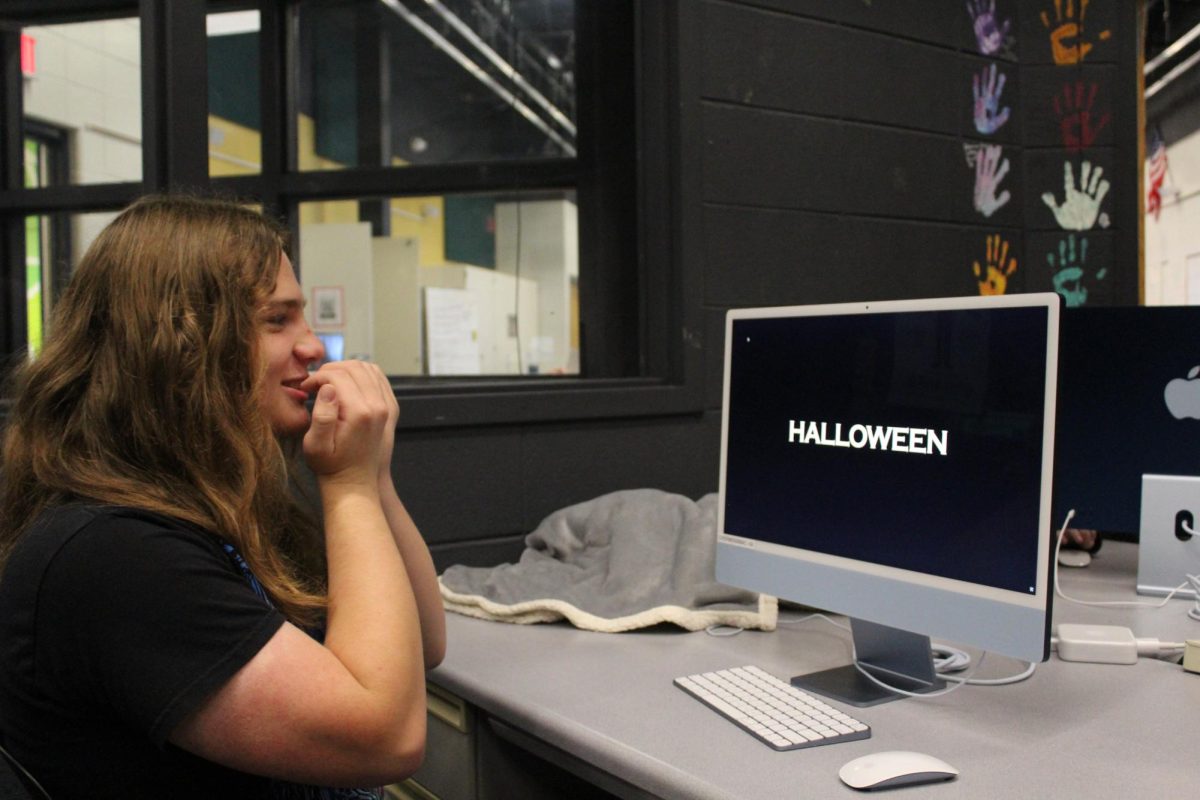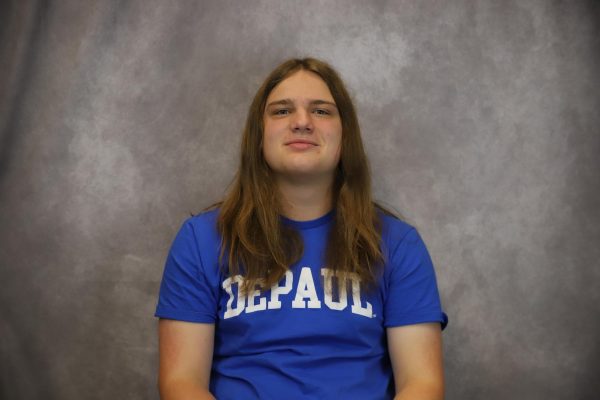Film Findings is a biweekly column where I explore a movie that I think is underseen or undervalued, and try to present a case for why it’s worth watching – or, at the very least, interesting. What’s covered will vary from week to week, but my goal is to encourage people to consider the artistry and value in films that are often unfairly dismissed. Feel free to watch along and share your thoughts!
***
Upon first glance, it’s easy to look at a film like Unfriended and write it off as a relic of a bygone era. After all, it’s a 2014 screenlife horror movie that takes place entirely in the MacBook screen of a teenage girl, primarily alternating between antiquated programs like Facebook and Skype. Its reputation as an unintentionally comedic target for snarky YouTube critics has only grown over the years, and that’s a real shame. It’s one of the scariest, most evocative ghost stories of the twenty-first century, and one of the most flawless depictions of growing up on the computer. Its datedness only makes it more effective as a horror film.
Its formal experimentation is in service of some pretty basic slasher framework: six teenagers in a video call are terrorized by the vengeful spirit of Laura Barns, an acquaintance of the group who committed suicide after a vicious cyberbullying campaign. Blaire, whose laptop screen the viewer is confined to, was closest to Laura, and spends the film’s opening minutes watching the footage of her death, presumably wracked with guilt. Of course, it becomes apparent that this targeting isn’t random, and Blaire and her friends are far more culpable than they’re willing to admit. One by one they are dispatched and pitted against each other in increasingly cruel and absurd ways.
More than anything, Unfriended shines in its keen understanding of the double-edged-sword of navigating digital landscapes. Any necessary context is fed to the audience as they watch Blaire juggle multiple conversations in multiple tabs at once, a narrative device that’s immediately a little overwhelming. There’s a potent sense of information overload that – needless to say – will feel resoundingly real for anybody who’s spent even a little bit of time on the internet in its current state. The film brilliantly mines tension from the inherent ambiguity of these interactions, imbuing its opening stretch with a deep, palpable ache of teenage isolation. As far as relatable computer anxieties go, it covers all the bases: the searing betrayal of a text left unanswered; hovering the cursor over a send button and knowing there’s no going back once you click it; a typing bubble that ripples with motion for just a little too long.
That’s all before any ghosts even show up. Connection is stripped away in spaces where it should be easier than ever, an idea that becomes even scarier in the face of supernatural interference. If anyone would easily betray another person while at the mercy of real-life, tangible threat, imagine what they would be willing to do with the mere image of someone else on a screen. Unlike a lot of recent techno-horror, however, Unfriended isn’t really a treatise on alienation and loneliness. Blaire is popular, she has friends. The thing is, they’re all horrible people. Watching as they’re forced to sabotage their lives and relationships is nothing short of a delight. It’s a film that revels in teen cruelty with sadistic glee, and it’s all the better for it.
There is empathy and sadness here, though, even going beyond the obvious sympathy the film adopts for Laura Barns and her plight. Perhaps some of it isn’t even really intentional. Either way, every single file, text message and piece of browsing history on Blaire’s computer serves as a little humanizing blip against the cold, digital ether, now forever lost to time. Ostensibly, it’s a movie that preys on common fears about social media being forever, but the spaces depicted here don’t really exist anymore – at least, not really in the same form. It’s strange to say about a film that opens with a teen watching a full-screen LiveLeak video, but the internet it showcases feels far warmer than the one we have today. It’s not just a fascinating time capsule; it feels downright haunted.
Towards the end, things take a nosedive into insanity. The final act is a datamoshed hellscape of screaming, bickering, and constant jolts. But the film is at its most unsettling during its earlier, more patient scares. The first death in particular is one of the most frightening scenes in all of modern horror. After being possessed, Laura’s first victim just sits and stares directly into her webcam for what feels like eons, wide-eyed and unblinking. The spikes in background noise indicate that this is indeed not a glitch, before, abruptly, the eerie stillness is punctuated by a jumpscare as her computer falls to the ground. The fuzzy camera quality makes the whole thing feel like a particularly upsetting find from a 3 a.m. “creepy YouTube videos” playlist binge, one of the few times genre cinema has been able to sufficiently tap into the unreality and lo-fi texture of this specific era of internet horror.
At its best, Unfriended is scary on a primal level because it so vividly captures a total loss of control. What happens when a space that’s thoroughly personalized to your specific desires suddenly stops doing what you tell it to? It’s a simple idea that the film exploits to invoke fear, pathos, and exciting slasher movie thrills – sometimes all at once. It deserves another look from both the chronically online and general moviegoing public alike, and – like its tormented villain – the world owes it an apology.



